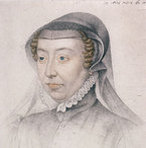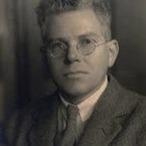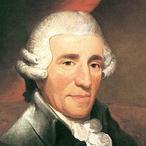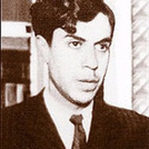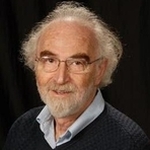|
It's been a busy week for concerts here at Show Me Something Interesting: a concert production of Mozart's opera "Die Entführung aus dem Serail" at the Queen Elizabeth Hall, and a performance of Vivaldi's "Nisi Dominus" and Pergolesi's "Stabat Mater" at the Barbican - I'll be reviewing the Barbican concert later this week.
The production of "Die Entführung" at the Queen Elizabeth Hall was rather different to the other performances I have seen. Firstly, the speaking role of Pasha Selim was replaced with by "narrator", in the person of actor Simon Butteriss. His role was performed in English, much in the same way as a performance of "Cosi Fan Tutti" I had heard a couple of years previous St Paul's church in Covent Garden. Having the narration in English made the production much more engaging and easier to understand, and for me worked better than the original "singspiel" format. The lack of understanding between the European and Ottoman worldviews put forward in the original libretto is brought up-to-date by a series of references to modern Euro-Turkic and Euro-Islamic points of tension, while the revelation of the Pasha's enlightened attitude and the subsequent fostering of goodwill from all characters (except Osmin!) is treated intelligently and avoids the danger of saccharin feyness. The role of Konstanze is famously hard, requiring excellent support, full integration of the head and chest voices, the ability to sing both emotive lyric passages and dynamic coloratura, and a vocal range stretching from low B to high D. Susan Gritton has all of this. Her portrayal was thoughtful and honest, with a magnificent performance of "Marten Allen Arten" stunning the audience. Her navigation of the various structures of this show-stopping aria was at all times controlled, yet passionate, and she sang masterfully the most difficult passage, moving by step down from high D to low B, only to jump right back up to high C, followed by a pianissimo high C with crescendo to fortissimo! Not an aria for the faint of heart. The French-Canadian tenor Frédéric Antoun proved to be a fascinating discovery in the role of Belmonte, Konstanze's faithful lover and would-be rescuer. In possession of a beautiful lyric voice, Antoun's characterisation fitted perfectly the ardent yet innocent persona of a Mozartian lead tenor, such as Tamino from Die Zauberflote. Most exciting however was his power and added darkness in the more "dramatic" moments of the role - neither forced nor overplayed. The opening aria "Hier soll ich dich denn sehen" showed us that we were in for a treat, and the tender yet passionate "Konstanze! Dich Wiederzusehen...O Wie Ängstlich" was mesmerising. Definitely a tenor to watch, and one with an interesting career ahead. The English woman who causes so much trouble and consternation for poor Osmin is Blonde, the servant of Konstanze. While written for a much lighter voice, the role is no easy earner. Requiring a range of low Ab to high E (!), any soubrette coloratura coming to the role needs complete command over her instrument and complete confidence in her abilities. Malin Christensson performed admirably in the role, with the difficult first aria "Durch Zärtlichkeit" admirably performed, though the first of the high E's was a little screeched. The duet with Osmin "Ich gehe, doch rate ich dir" following straight after "Durch Zärtlichkeit" drops down to the other extreme of the range with Christensson dropping to a low Ab mimicking Osmins low Eb. Her aria "Welche Wonne, welche Lust" was performed perfectly, and with exactly the right amount of oomph required. The role of Pedrillo has one of my favourite arias for tenor: "Frisch zum Kampfe! Frisch zum Streite!" With two long, fortissimo high G's, a throw-away high B, and three punchy high A's at the end, it's not an aria for the weak and feeble. Tilman Lichdi was more than up for the challenge, powering out those tricky high notes, and adding a dramatic and humorous interpretation to the proceedings. Lichdi also excelled in his duet and trio with Osmin (and Belmonte), and in the ensembles, but the biggest suprise came with his serenade "In Mohrenland gefangen war” which was beautifully lyrical and tenderly performed, but still with classic the Lichdi sense of humour. Alastair Miles was a last minute replacement in the role of Osmin, so it was completely understandable that he sang from the score during the concert. What was amazing though was the amount of contact and interaction with the audience and the other performers - much more than one would expect from a last minute replacement. His characterisation of Osmin was impeccable: comic, brutish, childish and lecherous. Miles is becoming a bit of a favourite here at Show Me Something Interesting: have a look at my review of Niobe, Regina di Tebe for a review of his performance as Poliferno. His ability to soften the head voice in the aria "Wer ein Liebchen hat gefunden" made the dives down to the low G all the more lascivious. His first duet, with Belmonte, Verwünscht seist du samt deinem Liede!" had Miles in true bass territory with a low Eb and a low E which were both audible and unstrained. His aria "Solche hergelaufne Laffen", his rant against Pedrillo, was suitably vicious, and the oriental ending to the aria was fast and punchy. His performance in the duets and trio with the tenors and with Blonde (where he again hit an Eb) had great comic timing and acting, again suprising given he was a last minute replacement. The tour de force for any Osmin though is the final aria "O, wie will ich triumphieren", full of low F's, three low E's and two low D's, one lasting quite a long time, with some high parts, especially toward the end. Miles performed admirably, though the last low D was very quiet. Having performed this myself though for my GCSE exams, I give full credit to Miles for performing this at all at short notice.
0 Comments
|
Categories
All
Archives
September 2014
|
MOST VIEWED POSTS
© James Edward Hughes 2013
 RSS Feed
RSS Feed
